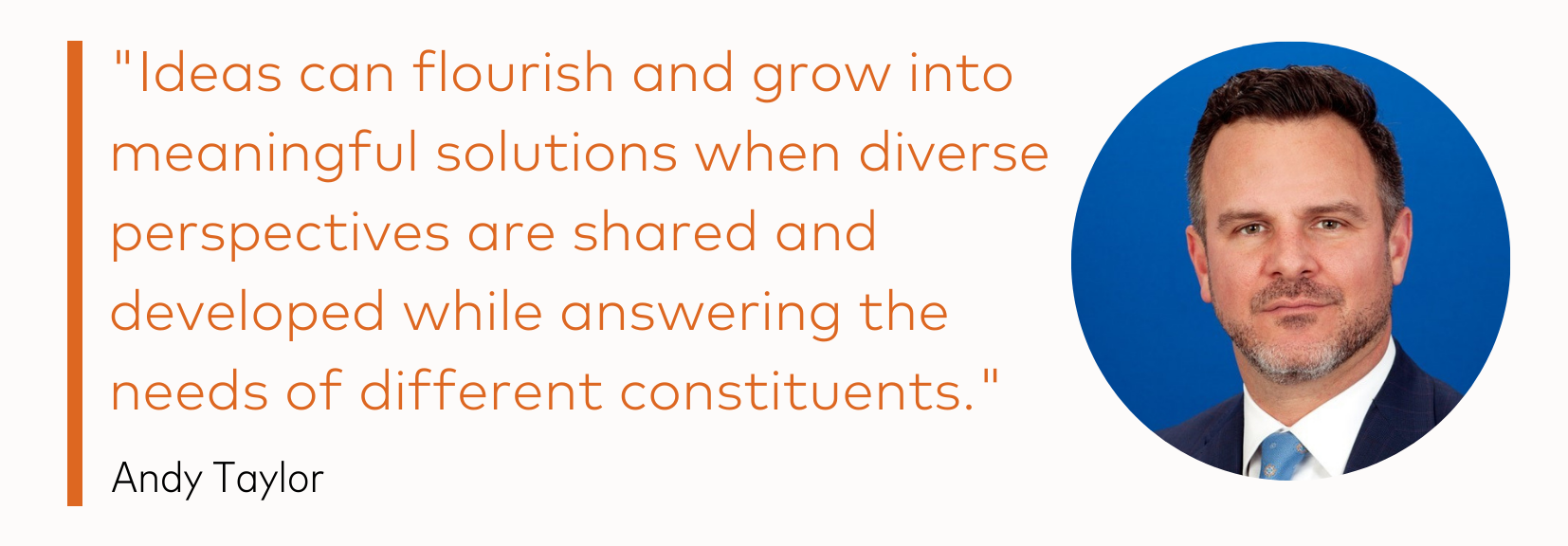Why challenges common to most cities require collaborative answers
November 17, 2021 | By Hayden Harrison
One of the prevailing headlines throughout the pandemic has been a supposed urban exodus – people suddenly untethered to offices, craving more space, or wary of closely-packed sidewalks, stores and mass transit. But research indicates that growth has merely slowed, and that in cities with population loss, it was due more to people not moving in than those moving out. The challenges cities face remain, from traffic congestion and air pollution to public safety and the struggle to deliver and pay for essential services, while COVID-19 has deepened both financial disparities and the digital divide.
Citi, which has long partnered with governments to build more resilient, sustainable and inclusive urban centers, recently joined Mastercard’s City Possible network, which brings together governments and the private sector to develop meaningful and shareable solutions to common problems.
“These are not simple matters to conquer,” says Andy Taylor, managing director of Citi’s Public Sector Group North America. “While digital technology presents opportunities to modernize, there's no one-size-fits-all approach. City leaders require complex solutions to complex issues, while also providing accessible services to all citizens and constituents they serve.”
We spoke to Taylor about how Mastercard and Citi plan to use their collective resources and expertise to address urban challenges, drive economic development and build more resilient communities.
Why have local governments and city leaders struggled to overcome these challenges to date?
Election cycles can be a true constraint. An elected official needs to show progress in a few years, rather than over one or two decades. And this can blur the vision when longer-term solutions are needed. In my role, I often view urban challenges from the lens of a city treasurer responsible for making sound economic decisions that support sustainable growth. A city treasurer must also provide citizens with efficient, secure and convenient ways to transact in an increasingly digital world.
Tell me about some of the ways you are supporting the world's leading cities as they have been managing unprecedent change.
Citi is committed to enabling urban progress and supporting cities in order to strengthen communities, optimize efficiency and enhance livability in cities worldwide. Our programs include Citi Start Saving and City Builder by Citi, information about which will be accessible to City Possible network members through the Mastercard City Insights Digital Marketplace.
City Builder by Citi is a free, data-driven platform that aggregates information about community investment opportunities. City Builder aims to increase transparency and access to information in order to help investors, fund managers, developers, municipalities and community members work together on community development projects. Citi has a long-standing commitment to supporting economic vitality. With City Builder, Citi is providing investors with the tools and information to find investment opportunities that fulfil their desire to make an impact.

The Citi Start Saving platform is used to manage the end-to-end fiscal administration by public-sector and large community organizations that sponsor and operate college savings programs for the benefit of students and their families. The platform leverages Citi’s expertise to provide a platform that empowers students and their families — especially those living on lower incomes — with access to the tools that can help build a more secure and equitable financial future, starting with saving for their education.
From the first use of the platform in 2011 to its expansion in 2021, Citi’s goal with the Citi Start Saving program has been to create a sustainable, scalable and inclusive product that is easy to use and, above all, can be automatically provided to every child entering a school system — even those children whose parents may be unbanked or who are foster children. It is this approach to universal access that makes Citi Start Saving System a key component of Citi’s Action for Racial Equity initiative, which includes a goal of helping 1 million youth on the path to higher education.
What role do technology and data play in ensuring inclusive urban growth?
Today, one of the challenges with place-based investing — making investment decisions to yield financial as well as social or environmental returns — is that the available data exists in disparate and bulky data sets that are hard to work with. The City Builder platform recognizes that data drives investment decisions, so it collects, analyzes and cross-references information from a wide variety of free, open and public sources, as well as paid-for, proprietary and private sources. The tool leverages multiple data sets to provide broad visibility, and the data is regularly refreshed to ensure that the information is current and applicable.
The development and launch of City Builder is about providing access and transparency to data that has the power to drive more impactful investments in the communities that need it most. What began as an effort to guide smart and impactful investments in Opportunity Zones in the U.S. has since expanded to Europe, where cities like Milan, rebuilding its post-pandemic economy, can use the data to encourage foreign investors, developers, entrepreneurs and nonprofits to revitalize the city.
Why is it important to collaborate on solutions? How do multinational corporations, financial institutions and public-sector organizations benefit from this network effect?
Collaboration is key to advancing progress. Ideas can flourish and grow into meaningful solutions when diverse perspectives are shared and developed while answering the needs of different constituents. For example, we tapped into the skills and expertise from an array of Citi businesses to help provide tools to the City and County of San Francisco so that it could develop a truly universal public school savings program that could navigate the complex policy requirements and goals among different stakeholders while putting kids on the path to college from their first day of kindergarten.
The Citi Start Saving platform was designed to both provide easy administration for city employees and easy access for families who may have limited computer or banking knowledge. Ongoing collaboration with our partners in San Francisco has enabled Citi to continue developing and improving the platform, eventually reaching the point where it could be scaled and made available to other cities. In 2021, the Citi Start Saving platform helped power the launch of college savings programs in two additional large cities in California. These two new programs will advance our goal of helping 1 million youth on the path to higher education.”
This can benefit millions of families, but governments and corporations also benefit from the economic progress in our urban centers. That is why I am so excited about our partnership with Mastercard and the City Possible network. The network gives Citi an effective platform to listen, learn and contribute to solutions thought of by the city governments we serve. We offer solutions that can benefit governments today and we are always thinking ahead to where we need to be in five, 10, 15 years down the road.
We’ll measure success both project by project and in the totality of what we’ve achieved together. My hope is that Citi and the members of Mastercard’s City Possible network can propel advancements in citizen engagement with government, sustainable development, effective mobility solutions and financial inclusion for decades to come.